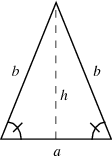Wonder why there are only a few pros at the top? Because only a very few knows the relationship of a full swing and a putter stroke. Most are applying, often times unconciously, the correct use of the right middle fingers but are not aware of its importance. Hogan never found it. Tiger did. How would you know who are aware of this? They have to be one of the best drivers and at the same time best putters of the golf ball. Nicklaus, employed it but I doubt if he was aware that he is doing it. Only Tiger probably realized the connection of the middle fingers to all facets of ball striking.
Remember I often write about the right knee and how important for it not to twist (locked knee) on the upswing to avoid swaying? That right knee controls the upper body (or the orientation of the shoulders to the target) from changing its orientation to the target. I would say that keeping the right knee locked during the swing is the number one rule in the golf swing. It limits the spray pattern of your balls (smaller controlled pattern) so as to make you be able to appreciate your game. When you apply the locked knee, you are more or less in control - you can actually apply "course management" because you, in a sense, knows where your ball is going.
But what is this secret that separated the boys from the men - the second most important rule in golf? The right middle fingers! Hogan was never a good putter (he had the yips) so I can say he never found the secret. Let me explain further... But before I do,
let us not forget that this works only when shoulders swing the club, as in my previous posting.
How is it executed? On the upswing (shoulders turning - not body), you have to feel the middle fingers (the tip part after the knuckles) acting like a claw pulling the club to the right and
UP and around, as it follows the turning shoulders. (
The tuning shoulders should follow the 2 o'clock path as it turns upwards since this is essential to initializing the inside out path.) At the top when the shoulders cannot move any longer, the two middle fingers bring the club up some more until the upper body is so coiled that it cannot go any longer at the top. This position will be the same every time, the "slot". At this moment, the upper body is about to explode. Just let it... it will come back to the ball the same way it left it with an inside-to-out path.
How does this technique work and why does it help? The answer is this technique forces the club face to come back to the ball, not only the same angle at set-up, but comes back in an inside to outside path. This tendency promotes accuracy. However, due to the action of the middle fingers forcing the club to set at the top consistently at the same slot, it also ensures a repeating swing. Be aware that the way the club left the ball on the upswing is the way it will come back on the downswing.
How would one know that he has executed the correct movements? When correctly done, upon the release of the shoulders (downswing), you will feel that the club is righting itself accurately towards and past the ball. You will have that feeling that the club did it all. However, if you cannot still get it, buy a weighted trainer club, something heavy. Once you start swinging with an extra heavy iron clubhead, when not done correctly, you will notice that your left hand arm muscles is working too much to straighten the club face towards the imagined ball (I do this in my cathedral ceiling bedroom). The inverse is the right way - when no effort is done and the heavy club rights the club face automatically and the path is a very definite inside out, then you got it.
Why did I say Hogan did not get it? Because he never learned how to putt like Tiger Woods. Tiger is the one that started to make 20 footers easy. Before, pros usually are expected to miss when it goes beyond the range of six foot. But Tiger started making those ten footers easy. The secret is the same. You must feel that the putter is being moved by the shoulders and the right middle fingers only helping to claw the handle back and up slightly (
pendulum) - the shoulders putts the ball. In that little instant and short distance, a mini version of the full swing is executed - the pendulum-claw action forces an automatic, repeating, and accurate putting technique.
